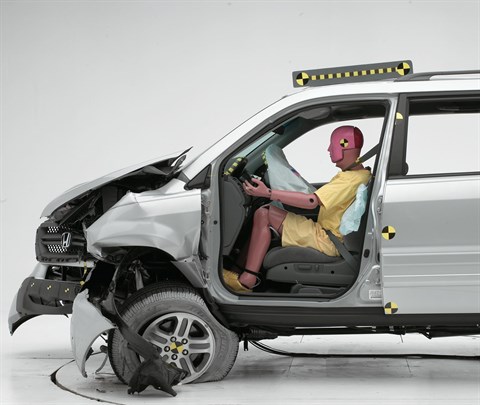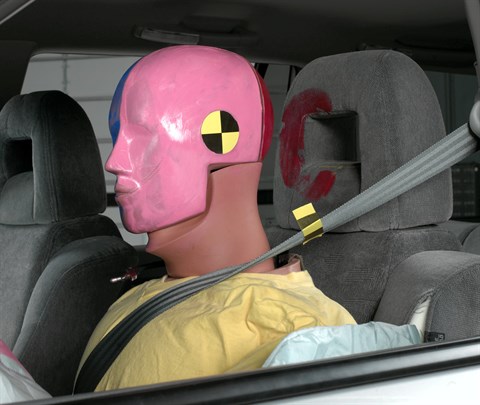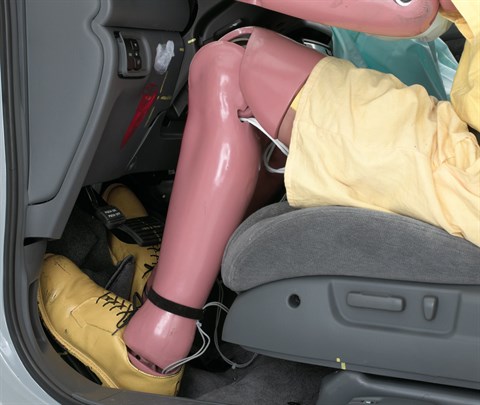Moderate overlap front: original test
Rating applies to 2003-05 models
Tested vehicle: 2003 Honda Pilot EX 4-door 4wd
The Honda Pilot was introduced in the 2003 model year.
The Insurance Institute for Highway Safety has evaluated the crashworthiness of the Pilot in two 40 mph moderate overlap frontal crash tests into deformable barriers. In the first test, the frontal airbags deployed late, with the result that high forces were recorded on the dummy's head, indicating the likelihood of head injuries. This led Honda to modify the frontal airbag deployment characteristics on models produced after August 18, 2003. Also, Honda initiated a safety improvement campaign to modify at its cost vehicles produced earlier.
The Institute tested a second Pilot with the modified airbags, and the airbags inflated much earlier. Ratings of the Pilot are based on the results of the second test, except structural performance is based on both tests.
Honda has told the Institute that the 2006 models are sufficiently re-engineered that the the ratings for 2003-05 models do not carry over.
| Evaluation criteria | Rating |
|---|---|
| Overall evaluation | |
| Structure and safety cage | |
| Driver injury measures | |
| Head/neck | |
| Chest | |
| Leg/foot, left | |
| Leg/foot, right | |
| Driver restraints and dummy kinematics | |

Action shot taken during the second of two frontal offset crash tests.

The dummy's position in relation to the steering wheel and instrument panel after both crash tests indicates that the driver's survival space was maintained reasonably well (second test shown).

Dummy movement was well controlled. During rebound, the dummy's head hit only the head restraint, as indicated by smeared greasepaint.

Forces on the legs and feet were low, indicating that significant injury was unlikely.
Head restraints & seats
Seat type: Leather seats
| Overall evaluation | |
|---|---|
| Dynamic rating | |
| Seat/head restraint geometry |
Seat type: Cloth seats
| Overall evaluation | |
|---|---|
| Dynamic rating | |
| Seat/head restraint geometry |
About the head restraint & seat test
Currently, IIHS tests apply only to front seats.
